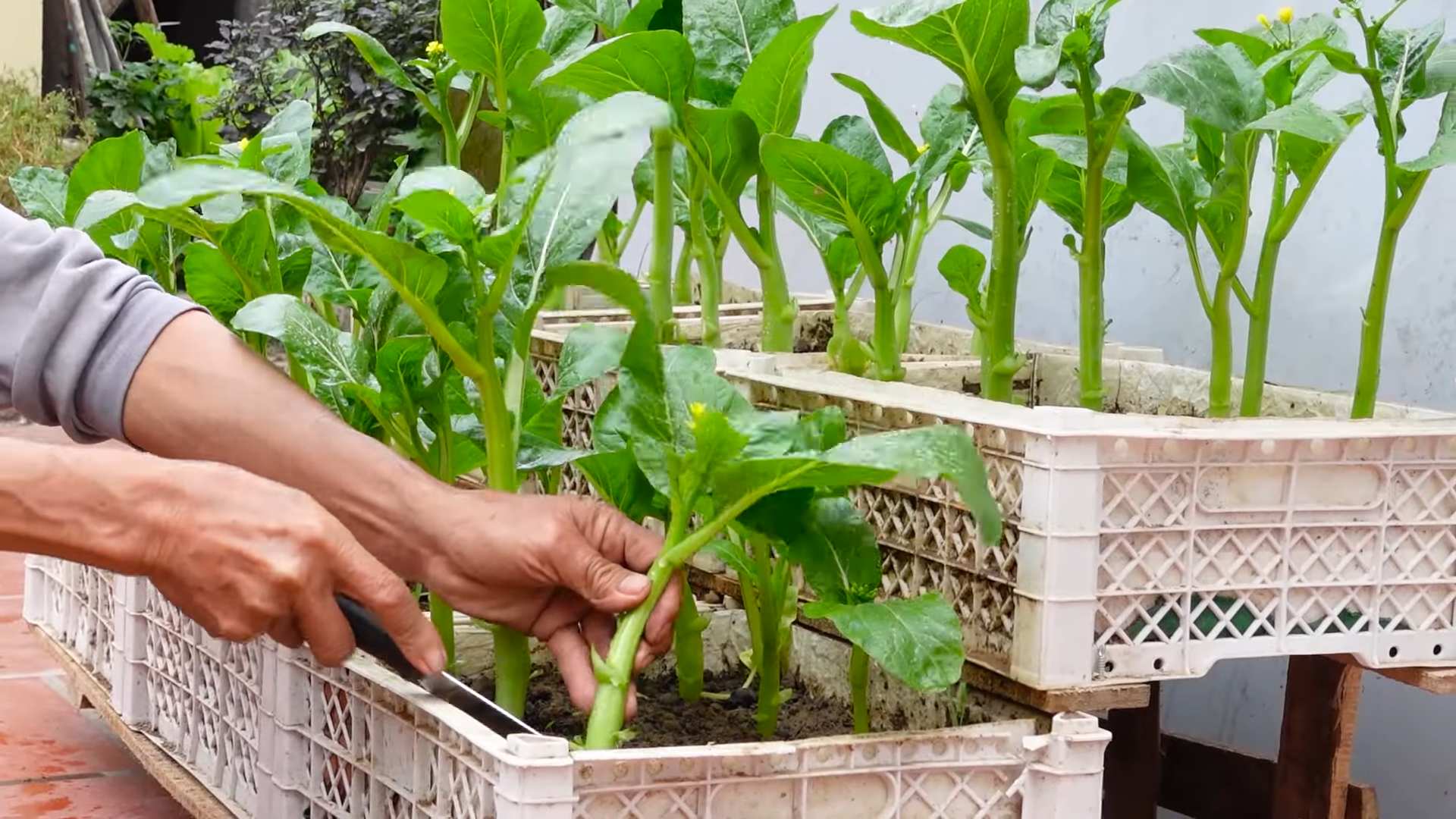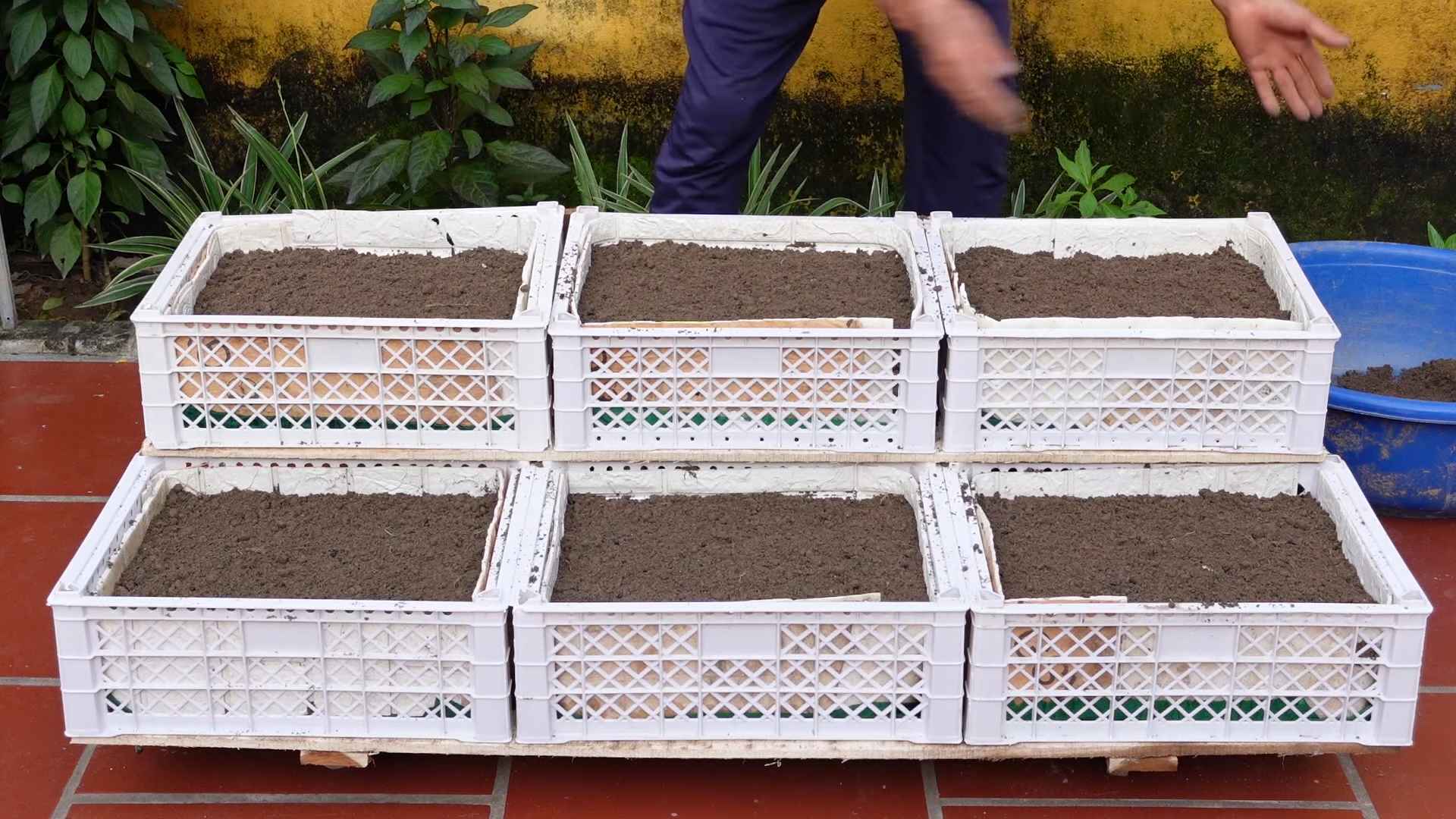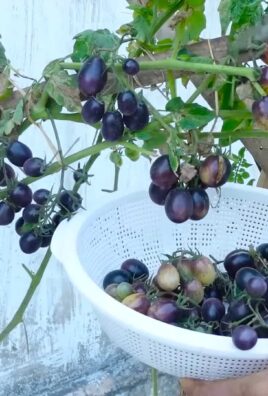Home vegetable gardening: it’s more than just a hobby; it’s a connection to the earth, a source of fresh, healthy food, and a deeply satisfying way to spend your time. Have you ever dreamed of stepping outside your back door and picking a sun-ripened tomato, still warm from the sun? Or snipping fresh herbs to add a burst of flavor to your dinner? I know I have, and I’m here to tell you, it’s easier than you think!
For centuries, people have cultivated their own food, from the elaborate kitchen gardens of European royalty to the humble plots tended by families around the world. The act of growing your own vegetables is a timeless tradition, a way to nourish both body and soul. But let’s be honest, sometimes it can feel a little daunting, right? That’s where these DIY tricks and hacks come in.
In today’s fast-paced world, knowing where your food comes from is more important than ever. Home vegetable gardening allows you to control what goes into your food, avoiding harmful pesticides and ensuring the freshest possible ingredients. Plus, it’s a fantastic way to reduce your carbon footprint and connect with nature. I’m going to share some simple, effective DIY solutions that will help you overcome common gardening challenges, maximize your yield, and create a thriving vegetable garden, no matter how much space you have. Get ready to get your hands dirty and discover the joy of growing your own food!

Creating Your Dream Home Vegetable Garden: A Beginner’s Guide
Hey there, fellow garden enthusiasts! I’m so excited you’re thinking about starting your own vegetable garden. Trust me, there’s nothing quite like the taste of a tomato you’ve grown yourself, or the satisfaction of serving up a salad made entirely from your backyard bounty. It might seem daunting at first, but I promise, with a little planning and effort, you can have a thriving vegetable garden, even if you’re a complete beginner. Let’s dive in!
Planning Your Garden: Setting the Stage for Success
Before you even think about digging, a little planning goes a long way. This is where you decide what you want to grow, where you’ll grow it, and how you’ll make it all happen.
* Choosing Your Vegetables: Think about what you actually *like* to eat! There’s no point in growing kale if you’re never going to eat it. Consider your family’s preferences and choose vegetables that you’ll enjoy harvesting and cooking. Also, think about your climate and growing season. Some vegetables thrive in warm weather, while others prefer cooler temperatures.
* Assessing Your Space: How much space do you have available? Even a small balcony can accommodate a container garden. If you have a yard, consider the amount of sunlight it receives. Most vegetables need at least 6 hours of direct sunlight per day. Observe your yard throughout the day to see where the sun shines the most.
* Soil Testing: Healthy soil is the foundation of a healthy garden. A soil test will tell you the pH level and nutrient content of your soil. You can purchase a soil testing kit at most garden centers or send a sample to your local agricultural extension office. This will help you determine if you need to amend your soil with compost, fertilizer, or other amendments.
* Garden Layout: Plan the layout of your garden on paper before you start digging. Consider the mature size of each plant and space them accordingly. Taller plants should be placed on the north side of the garden so they don’t shade smaller plants. Think about companion planting – some plants benefit each other when grown together. For example, tomatoes and basil are a classic pairing.
* Water Source: Make sure you have easy access to a water source. A garden hose or watering can will work, but a drip irrigation system can save you time and water.
Preparing Your Garden Bed: Getting Your Hands Dirty
Now for the fun part – getting your hands dirty! Preparing your garden bed properly will give your plants the best possible start.
* Clearing the Area: Remove any grass, weeds, rocks, or debris from the area where you plan to plant. You can use a shovel or garden fork to dig up the grass, or you can smother it with cardboard or newspaper covered with mulch. This will take a few weeks, but it’s a great way to kill the grass without using chemicals.
* Tilling or Digging: If your soil is compacted, you’ll need to till or dig it to loosen it up. Tilling can be done with a rototiller, while digging can be done with a shovel or garden fork. Dig down at least 12 inches and break up any large clumps of soil.
* Amending the Soil: This is where you add compost, manure, or other amendments to improve the soil’s fertility and drainage. Compost is a great all-around amendment that adds nutrients and improves soil structure. Work the amendments into the soil with a shovel or garden fork.
* Creating Raised Beds (Optional): Raised beds are a great option if you have poor soil or drainage problems. They also make it easier to control weeds and pests. You can build raised beds out of wood, stone, or concrete blocks. Fill them with a mixture of topsoil, compost, and other amendments.
Planting Your Vegetables: Bringing Your Garden to Life
This is the moment you’ve been waiting for – planting your vegetables!
1. Starting Seeds Indoors (Optional): Some vegetables, like tomatoes, peppers, and eggplants, benefit from being started indoors a few weeks before the last frost. This gives them a head start on the growing season. You’ll need seed starting trays, potting mix, and a grow light. Follow the instructions on the seed packet for planting depth and spacing.
2. Direct Sowing Seeds: Other vegetables, like carrots, radishes, and lettuce, can be sown directly into the garden. Prepare the soil by raking it smooth and creating shallow furrows. Sow the seeds according to the instructions on the seed packet. Cover them with a thin layer of soil and water gently.
3. Transplanting Seedlings: Once your seedlings have a few sets of true leaves, they’re ready to be transplanted into the garden. Choose a cloudy day or late afternoon to transplant to minimize stress on the plants. Dig a hole that’s slightly larger than the root ball. Gently remove the seedling from its container and loosen the roots. Place the seedling in the hole and backfill with soil. Water thoroughly.
4. Spacing Your Plants: Give your plants enough space to grow. Overcrowding can lead to disease and reduced yields. Follow the spacing recommendations on the seed packet or plant tag.
5. Mulching: Mulch is a layer of organic material, such as straw, wood chips, or shredded leaves, that’s spread around the plants. Mulch helps to retain moisture, suppress weeds, and regulate soil temperature.
Caring for Your Garden: Nurturing Your Plants
Once your vegetables are planted, it’s important to provide them with the care they need to thrive.
* Watering: Water your plants regularly, especially during dry spells. Water deeply and less frequently, rather than shallowly and often. This encourages the roots to grow deeper, making the plants more drought-tolerant. Water in the morning to allow the foliage to dry before nightfall, which can help prevent fungal diseases.
* Fertilizing: Vegetables need nutrients to grow and produce fruit. Fertilize your plants every few weeks with a balanced fertilizer. You can use a liquid fertilizer or a granular fertilizer. Follow the instructions on the fertilizer label.
* Weeding: Weeds compete with your vegetables for water, nutrients, and sunlight. Remove weeds regularly by hand or with a hoe. Mulching can help to suppress weeds.
* Pest and Disease Control: Keep an eye out for pests and diseases. If you spot any problems, take action immediately. There are many organic pest and disease control methods available, such as insecticidal soap, neem oil, and copper fungicide.
* Supporting Plants: Some vegetables, like tomatoes and cucumbers, need support to grow properly. You can use stakes, cages, or trellises to support these plants.
Harvesting Your Vegetables: Enjoying the Fruits (and Vegetables!) of Your Labor
This is the best part of gardening – harvesting your vegetables!
* Knowing When to Harvest: Each vegetable has its own ideal time for harvesting. Some vegetables, like lettuce and spinach, can be harvested as soon as the leaves are large enough to eat. Others, like tomatoes and peppers, need to ripen on the vine. Refer to a gardening guide or seed packet for specific harvesting instructions.
* Harvesting Techniques: Use a sharp knife or scissors to harvest your vegetables. Handle them gently to avoid bruising.
* Storing Your Harvest: Store your vegetables properly to keep them fresh for as long as possible. Some vegetables, like tomatoes and peppers, can be stored at room temperature. Others, like lettuce and spinach, should be stored in the refrigerator. You can also preserve your harvest by canning, freezing, or drying.
Troubleshooting Common Garden Problems
Even the most experienced gardeners encounter problems from time to time. Here are some common garden problems and how to fix them:
* Yellowing Leaves: Yellowing leaves can be a sign of nutrient deficiency, overwatering, or underwatering. Check the soil moisture and fertilize if necessary.
* Pests: Pests can damage your plants and reduce your yields. Identify the pest and use an appropriate control method.
* Diseases: Diseases can also damage your plants. Identify the disease and use an appropriate control method.
* Poor Soil Drainage: Poor soil drainage can lead to root rot. Amend the soil with compost or other organic matter to improve drainage.
* Lack of Sunlight: Vegetables need at least 6 hours of direct sunlight per day. If your garden doesn’t get enough sunlight, consider moving it to a sunnier location or growing vegetables that tolerate shade.
Tips for Success
Here are a few extra tips to help you succeed with your vegetable garden:
* Start Small: Don’t try to grow too much at once. Start with a small garden and gradually expand it as you gain experience.
* Choose the Right Varieties: Select varieties that are well-suited to your climate and growing conditions.
* Keep a Garden Journal: Keep track of what you plant, when you plant it, and how it performs. This will help you learn from your mistakes and improve your gardening skills over time.
* Don’t

Conclusion
So, there you have it! Transforming your outdoor space into a thriving, bountiful garden is not only achievable but incredibly rewarding. We’ve explored the simple yet effective methods for successful home vegetable gardening, proving that you don’t need acres of land or years of experience to enjoy fresh, homegrown produce.
Why is this DIY approach a must-try? Because it puts you in control. You control the quality of your food, knowing exactly what goes into it – no pesticides, no hidden ingredients, just pure, natural goodness. You control the variety, choosing the vegetables you and your family love most. And you control the cost, often saving money compared to buying produce at the grocery store, especially during peak season. Beyond the practical benefits, home vegetable gardening offers a unique connection to nature, a therapeutic escape from the stresses of daily life, and a profound sense of accomplishment as you watch your tiny seeds sprout and flourish into delicious, edible plants.
But don’t stop there! This is just the beginning of your gardening journey. Experiment with different varieties of vegetables. Try companion planting, where you strategically pair plants that benefit each other. Consider vertical gardening if you’re short on space, using trellises, hanging baskets, or stacked planters to maximize your yield. Explore different soil amendments to improve drainage and fertility. You could even delve into the world of composting, turning your kitchen scraps into nutrient-rich fertilizer for your garden.
For instance, if you’re growing tomatoes, try adding basil as a companion plant – it’s said to improve their flavor and deter pests. If you’re growing carrots, interplant them with onions to repel carrot root flies. If you’re struggling with pests, consider introducing beneficial insects like ladybugs or lacewings to your garden. The possibilities are endless!
Home vegetable gardening is a continuous learning process, and there’s always something new to discover. Don’t be afraid to make mistakes – they’re all part of the learning curve. The most important thing is to get started and enjoy the process.
We’re confident that with a little effort and dedication, you can create a thriving vegetable garden that provides you with fresh, healthy food for years to come. So, grab your gardening gloves, gather your tools, and get ready to experience the joy of growing your own food.
We’d love to hear about your experiences with home vegetable gardening! Share your tips, tricks, and successes in the comments below. Let’s create a community of gardeners who inspire and support each other. What are you waiting for? Your garden awaits!
Frequently Asked Questions (FAQ)
What are the easiest vegetables to grow for beginners?
For beginners venturing into home vegetable gardening, some of the easiest and most rewarding vegetables to start with include:
* **Lettuce:** Lettuce is quick to grow, tolerates a range of conditions, and can be harvested continuously by picking outer leaves.
* **Radishes:** Radishes are incredibly fast-growing, often ready to harvest in just a few weeks. They’re also relatively pest-resistant.
* **Spinach:** Similar to lettuce, spinach is easy to grow and can be harvested multiple times.
* **Green Beans:** Green beans are productive and relatively low-maintenance. Bush bean varieties are particularly well-suited for small gardens.
* **Zucchini:** Zucchini is known for its prolific growth, often producing an abundance of vegetables with minimal effort.
* **Cherry Tomatoes:** Cherry tomatoes are generally easier to grow than larger tomato varieties and are less prone to cracking.
* **Peppers:** Bell peppers and other pepper varieties are relatively easy to grow in warm climates and can be quite productive.
* **Cucumbers:** Cucumbers are vigorous growers and can be trained to climb trellises, saving space in the garden.
These vegetables are generally forgiving of beginner mistakes and provide a quick return on your investment, encouraging you to continue your home vegetable gardening journey.
How much sunlight do vegetables need?
Most vegetables require at least 6-8 hours of direct sunlight per day to thrive. This is crucial for photosynthesis, the process by which plants convert sunlight into energy. Some vegetables, like leafy greens, can tolerate slightly less sunlight (around 4-6 hours), but they will generally produce a smaller yield. When planning your home vegetable gardening space, observe the sunlight patterns throughout the day to identify the areas that receive the most sun. If your garden doesn’t receive enough natural sunlight, you may consider using grow lights to supplement.
What kind of soil is best for vegetable gardening?
The ideal soil for home vegetable gardening is well-draining, fertile, and rich in organic matter. A loamy soil, which is a mixture of sand, silt, and clay, is generally considered the best option. However, most garden soils can be improved with amendments. Adding compost, aged manure, or other organic matter will improve drainage, aeration, and nutrient content. It’s also a good idea to test your soil’s pH level. Most vegetables prefer a slightly acidic to neutral pH (around 6.0 to 7.0). You can purchase a soil testing kit at most garden centers or send a sample to a local agricultural extension office for analysis.
How often should I water my vegetable garden?
The frequency of watering depends on several factors, including the type of vegetables you’re growing, the weather conditions, and the type of soil you have. As a general rule, water deeply and less frequently, rather than shallowly and often. This encourages roots to grow deeper, making plants more drought-tolerant. Check the soil moisture regularly by sticking your finger about an inch into the soil. If it feels dry, it’s time to water. During hot, dry weather, you may need to water daily. Using a soaker hose or drip irrigation system can help deliver water directly to the roots, minimizing water loss through evaporation. Mulching around your plants can also help retain moisture in the soil.
How do I deal with pests and diseases in my vegetable garden?
Prevention is key when it comes to managing pests and diseases in your home vegetable gardening. Start by choosing disease-resistant varieties of vegetables. Practice crop rotation to prevent the buildup of soilborne pathogens. Keep your garden clean and free of weeds, which can harbor pests and diseases. Inspect your plants regularly for signs of problems. If you spot pests, try hand-picking them off or using insecticidal soap or neem oil. For diseases, remove and destroy infected plant parts. Avoid overhead watering, which can create a humid environment that favors fungal diseases. Consider using row covers to protect your plants from pests. Introducing beneficial insects like ladybugs and lacewings can also help control pest populations.
Can I grow vegetables in containers?
Yes, absolutely! Container gardening is a great option for those with limited space or poor soil conditions. When growing vegetables in containers, choose pots that are large enough to accommodate the mature size of the plants. Use a high-quality potting mix that drains well. Be sure to water regularly, as containers tend to dry out more quickly than garden beds. Fertilize your plants regularly with a balanced fertilizer. Some vegetables that thrive in containers include tomatoes, peppers, herbs, lettuce, and strawberries. Container home vegetable gardening allows you to move plants around to maximize sunlight exposure and protect them from harsh weather conditions.




Leave a Comment